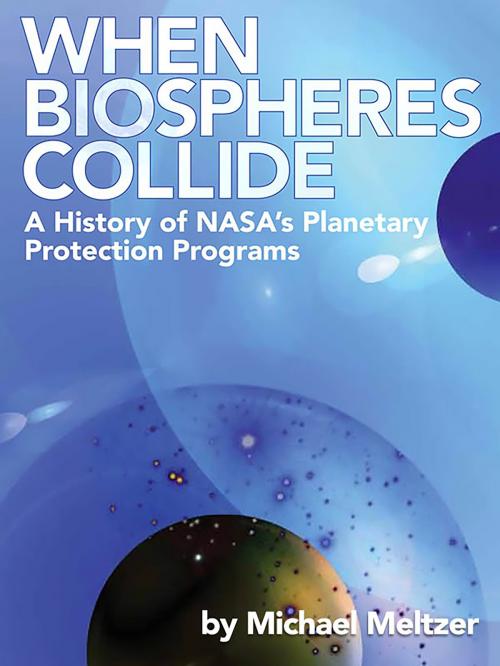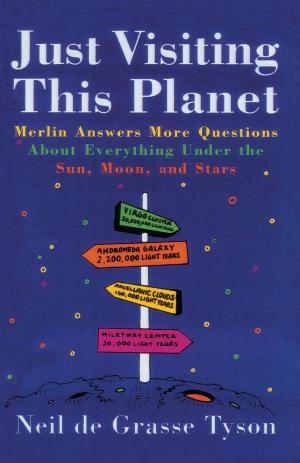When Biospheres Collide: A History of NASA's Planetary Protection Programs
A History of NASA's Planetary Protection Programs
Nonfiction, Science & Nature, Science, Physics, Astrophysics & Space Science| Author: | Michael Meltzer | ISBN: | 9780160897450 |
| Publisher: | US National Aeronautics and Space Admin | Publication: | January 27, 2012 |
| Imprint: | U.S. National Aeronautics and Space Administration | Language: | English |
| Author: | Michael Meltzer |
| ISBN: | 9780160897450 |
| Publisher: | US National Aeronautics and Space Admin |
| Publication: | January 27, 2012 |
| Imprint: | U.S. National Aeronautics and Space Administration |
| Language: | English |
**PRINT FORMAT ONLY NOTE: NO FURTHER DISCOUNT FOR THIS PRINT PRODUCT- OVERSTOCK SALE -- Significantly reduced list price **
This new book from the NASA History Series tackles an interesting duo of biological problems that will be familiar to anybody who has seen photos of Apollo astronauts quarantined after their return to Earth. Namely, how do we avoid contaminating celestial bodies with Earthly germs when we send spacecraft to study these bodies, and how do we avoid spreading foreign biological matter from space when our robotic and human spacefarers return to Earth? Biological matter from an external system could potentially cause an unchecked epidemic either on Earth or in space so strict precautions are necessary.
Each time a space vehicle visits another world it runs the risk of forever changing that extraterrestrial environment. We are surrounded on Earth by a mélange of different microorganisms, and if some of these hitchhike onboard a space mission, they could contaminate and start colonies on a different planet. Such an occurrence would irrevocably alter the nature of that world, compromise all future scientific exploration of the body, and possibly damage any extant life on it. By inadvertently carrying exotic organisms back to Earth on our spacecraft, we also risk the release of biohazardous materials into our own ecosystem. Such concerns were recognized by scientists even before the 1957 launch of Sputnik.
This book presents the history of planetary protection by tracing the responses to the above concerns on NASA’s missions to the Moon, Mars, Venus, Jupiter, Saturn, and many smaller bodies of our solar system. The book relates the extensive efforts put forth by NASA to plan operations and prepare space vehicles that return exemplary science without contaminating the biospheres of other worlds or our own. To protect irreplaceable environments, NASA has committed to conducting space exploration in a manner that is protective of the bodies visited, as well as of our own planet.
**PRINT FORMAT ONLY NOTE: NO FURTHER DISCOUNT FOR THIS PRINT PRODUCT- OVERSTOCK SALE -- Significantly reduced list price **
This new book from the NASA History Series tackles an interesting duo of biological problems that will be familiar to anybody who has seen photos of Apollo astronauts quarantined after their return to Earth. Namely, how do we avoid contaminating celestial bodies with Earthly germs when we send spacecraft to study these bodies, and how do we avoid spreading foreign biological matter from space when our robotic and human spacefarers return to Earth? Biological matter from an external system could potentially cause an unchecked epidemic either on Earth or in space so strict precautions are necessary.
Each time a space vehicle visits another world it runs the risk of forever changing that extraterrestrial environment. We are surrounded on Earth by a mélange of different microorganisms, and if some of these hitchhike onboard a space mission, they could contaminate and start colonies on a different planet. Such an occurrence would irrevocably alter the nature of that world, compromise all future scientific exploration of the body, and possibly damage any extant life on it. By inadvertently carrying exotic organisms back to Earth on our spacecraft, we also risk the release of biohazardous materials into our own ecosystem. Such concerns were recognized by scientists even before the 1957 launch of Sputnik.
This book presents the history of planetary protection by tracing the responses to the above concerns on NASA’s missions to the Moon, Mars, Venus, Jupiter, Saturn, and many smaller bodies of our solar system. The book relates the extensive efforts put forth by NASA to plan operations and prepare space vehicles that return exemplary science without contaminating the biospheres of other worlds or our own. To protect irreplaceable environments, NASA has committed to conducting space exploration in a manner that is protective of the bodies visited, as well as of our own planet.















